By Nathan Prefer
Without a doubt, the U.S. Army’s Ranger battalions were considered among the elite formations of World War II. Trained to be rough, tough, and unflinching in the face of insurmountable obstacles and overwhelming odds, the Rangers were America’s version of the British Commando units.
But one of the major criticisms of the Rangers during and after the war was that there were too few opportunities for them to use their special skills to make their continued upkeep and maintenance worthwhile. They drew off potential leaders from line infantry, artillery, and engineer units, required constant training, and often required special equipment while rarely finding a suitable opportunity for their use.
Ironically, therefore, it is strange that when they, in fact, performed as intended, these instances have often been ignored. While many students of the war are familiar with the achievements of the 2nd Ranger Battalion at Pointe du Hoc on D-Day and the 6th Ranger Battalion’s raid on the Japanese prisoner-of-war camp at Cabanatuan on Luzon, other successful Ranger operations are little known.
Originated by a request from President Franklin Delano Roosevelt for a U.S Army force modeled on the British Commandos, the first Rangers were formed in 1942 in England and drawn from U.S. volunteers then stationed there.
The ruggedly handsome Colonel William Orlando Darby, the originator and commander of the 1st Ranger Battalion, was born in 1911 in western Arkansas and enjoyed all the outdoor sports such as hunting and fishing. He was a 1933 graduate of West Point with a commission in the field artillery. Darby led the 1st Ranger Battalion in action at Arzew, Algeria, during Operation Torch, where his actions earned the Distinguished Service Cross. Unwilling to order his men to do anything he wouldn’t do, Darby was, and is, a shining example of an officer who always “led from the front.”
The original Rangers were trained by the British Commandos at their training site at Achnacarry in northern Scotland. Organized as a battalion, they adopted the name “Rangers” at the suggestion of Brig. Gen. Lucian K. Truscott, who had issued the original recommendation to Army Chief of Staff General George C. Marshall.
Volunteers had to be fully trained soldiers with superior leadership qualities, initiative, sound judgment, and common sense. They could
have no physical defects.
While no age limit was established, the Commando model of an average age of 25 years was generally followed. Men who had particular civilian skills, including marksmanship, scouting, mountaineering, seamanship, and small-boat handling were particularly welcome.
Training was strenuous. In the 1st Ranger Battalion, one in five of the original volunteers was returned to his unit for not meeting physical or training standards.
A World War II ranger battalion consisted of a headquarters and headquarters company and six rifle companies, each of two platoons. Each platoon consisted of two assault sections and a 60mm mortar section. Later the mortars would be grouped within each individual rifle company’s headquarters section. An assault section consisted of a section leader, assistant section leader, two scouts, one automatic rifleman, an assistant automatic rifleman, and five riflemen.
The United States Army’s Rangers’ first combat action in modern warfare took place at Dieppe on the French coast on August 1, 1942. Six officers and 45 enlisted men took part in a British/Canadian Commando raid on that French port. Two officers and four enlisted Rangers were killed, and four enlisted Rangers were captured. Two months later, in November 1942, the 1st Ranger Battalion entered combat for the first time as a unit at Arzew, Algeria, during the Allied invasion of North Africa.
The battalion conducted a successful raid against Italian Army positions at Station de Sened in Tunisia. During the battle of Kasserine Pass they defended Bou Chebka and conducted aggressive patrols. Later, they joined the 1st U.S. Infantry Division in its attack on the enemy positions at Gafsa, during which they infiltrated behind enemy lines and struck from behind as the infantry attacked from the front.
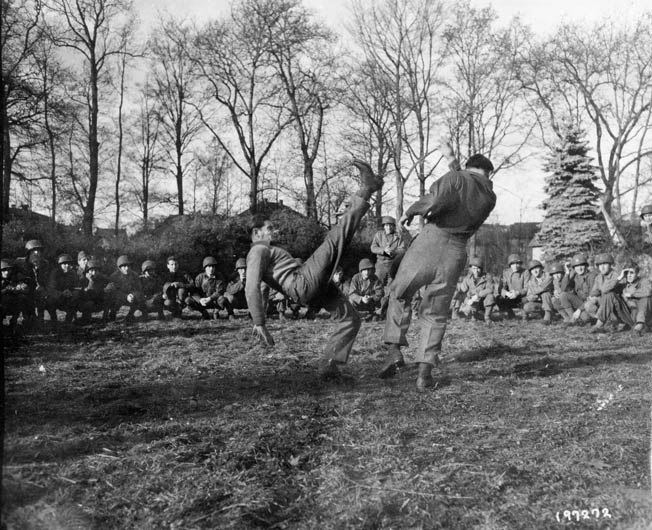
The success and popularity of the 1st Ranger Battalion inspired the creation of more battalions. Two—the 3rd and 4th—would be created overseas, drawn by dividing up the original Ranger battalion into thirds. Two more—the 2nd and 5th—would be created in the United States, both at Camp Forrest, Tennessee, in April and September 1943, respectively.
Another battalion, the 6th, would be created in General Douglas MacArthur’s Southwest Pacific Theater of Operations by converting a field artillery battalion staffed with volunteers into a Ranger battalion.
Colonel Darby was given command of the 6615th Ranger Force, which consisted of the 1st, 3rd, and 4th Ranger Battalions and the permanently attached 83rd Chemical Mortar Battalion, a 4.2-inch mortar unit. The Ranger Force fought in Sicily, at Salerno, and throughout Italy. In January 1944, they were part of the assault force at the invasion at Anzio. Soon thereafter, the three battalions took part in an attempt to infiltrate behind German lines at Cisterna but were virtually wiped out when they encountered vastly superior enemy forces containing the Allied beachhead.
On June 6, 1944, the 2nd and 5th Ranger Battalions entered combat against the Germans. Both battalions were a part of the First U.S. Army’s assault landing on Omaha Beach on D-Day. Three companies of the 2nd Rangers climbed the sheer cliffs of Pointe du Hoc to capture enemy guns that overlooked the invasion beaches. The remainder of that battalion and the 5th Ranger Battalion landed across “Bloody Omaha” to reinforce the Pointe du Hoc task force; heavy casualties resulted. When American commanders sought to force an exit off Omaha Beach, they turned to the 5th Ranger Battalion and ordered them, “Rangers, lead the way,” which they did, in the process creating the modern Ranger motto.
The Rangers remained in Normandy even after fighting had moved east. In September, the 5th Ranger Battalion participated as conventional infantry in the reduction of the fortress city of Brest, on the Brittany Peninsula. Other conventional engagements followed. At Brest alone the battalion suffered 23 Rangers killed, 89 wounded, and two missing. Fighting in December cost the battalion another 18 killed, 106 wounded, and five missing.
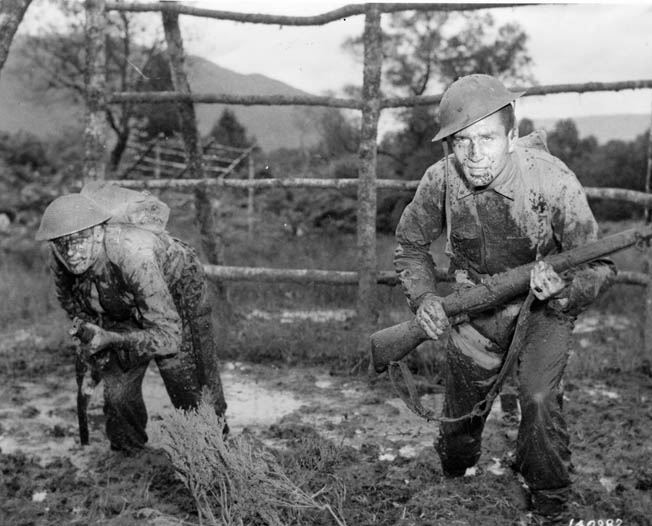
Two months later, February 1945, the 5th Ranger Battalion, commanded by Lt. Col. Richard P. Sullivan, was at Zerf, Germany. How they got there is a tale that goes back to September 1944, when the Allied pursuit of the defeated German armies in France reached the German frontier and the West Wall, or so-called Siegfried Line.
Lieutenant General George S. Patton’s Third U.S. Army found itself facing the German defenses at Metz, France, which held them up for several weeks. To the south, Lt. Gen. Alexander M. “Sandy” Patch’s Seventh Army exhausted itself attacking the German lines along the Moselle River in southern France.
Along the border between these two American armies lay a strong German defense in what came to be known as the Saar-Moselle Triangle. From the confluence of the Saar and Moselle Rivers in the north to a base along an east-west line roughly following the southern border of Luxembourg, the triangle measured more than 16 miles by 13 miles.
It was defended by a newly built portion of the German West Wall that had been constructed in 1940. Referred to by the Germans as the Orscholz Switch, the Americans called it the Siegfried Switch. It was specifically designed to prevent the outflanking of the West Wall positions protecting Germany’s Saar industrial area.
The American unit assigned to attack this zone was the XX Corps under the command of Maj. Gen. Walton Harris Walker. A Texan and 1912 graduate of West Point, Walker had led XX Corps since Normandy. It had earned the sobriquet of “Ghost Corps” because of its rapid movements, which often confused German intelligence as to its whereabouts. In November and December 1944, Walker had been directed toward the Saar River at Saarlautern and had only small reconnaissance forces available to direct against the Saar-Moselle Triangle.
It wasn’t until the end of November that a combined armor-infantry force had managed a small penetration at the villages of Tettingen and Butzdorf, and even this had to be surrendered when the Battle of the Bulge forced General Patton to turn north and leave only meager forces to hold his southern front.
In early January 1945, as the Battle of the Bulge was slowly winding down, a fresh infantry division joined XX Corps. This was the 94th Infantry Division under the command of Maj. Gen. Harry James Malony. General Malony was a native of New York and a graduate of West Point in the same class as General Walker. His division had landed in September in Normandy but had been kept busy besieging the German-occupied ports on the Cotentin Peninsula. Relieved there shortly after Christmas 1944, the 94th had come up to strengthen the Third Army, where Walker directed it against the Siegfried Switch.
With his strength levels still significantly reduced due to the demands of the Bulge battle, Walker had little in the way of support to provide the 94th. Nevertheless, he ordered Malony to probe the German defenses. The first attack was launched on January 14, 1945.
Early successes by the 94th Infantry Division prompted strong German counterattacks by the defending 416th Division. These attacks were unexpectedly reinforced by the 11th Panzer (“Ghost”) Division, which happened to be passing in the German rear and was hastily thrown into the developing battle. As a result, a bitter and bloody battle began, which drew in more forces on both sides. Combat Command A (Brig. Gen. Charles F. Colson) of the newly arrived 8th Armored Division was briefly thrown into the fray to counteract the German armor.
After two weeks of deadly combat, General Patton ordered a temporary halt to the attacks. A brief rest period was planned, and then the assault would be renewed. Just as the new attacks were begun, on February 2, 1945, a period of constant rain began. Foxholes filled with water, and roads became streams of mud. Nevertheless, the infantry attacked. The attack went slowly, with both the 416th Division and the 11th Panzer Division still defending the Orscholz Switch position to the fullest. To make matters apparently worse for Third Army, a new enemy formation, the 256th Division, was identified.
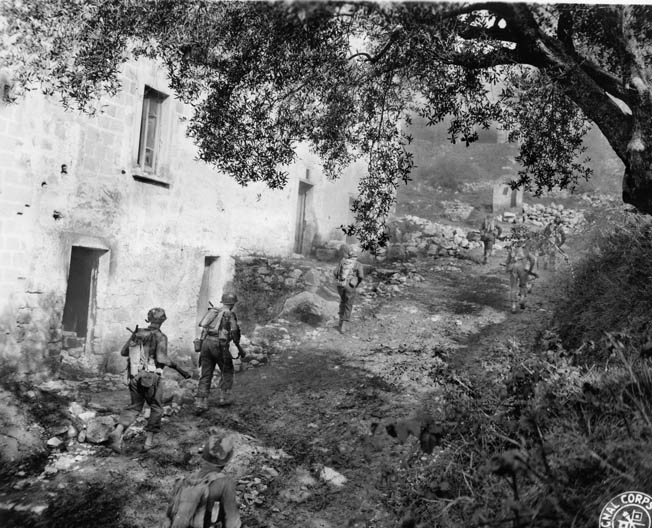
Surprisingly, the arrival of the 256th Division was actually good news for the Americans. It signaled the replacement of the 11th Panzer Division, which the Germans needed elsewhere. More good news came when General Walker received the temporary use of the 10th Armored Division.
With the German armor departing and the American armor arriving, things began to look up for the XX Corps. By February 19, the 94th Infantry Division, at a cost of over 1,000 casualties, had cleared most of the Saar-Moselle Triangle and opened the way for the advance of the 10th Armored Division. The objective now became the crossing of the Saar River. Reinforced by the 376th Infantry Regiment of the 94th Infantry Division, the tankers began to push forward, while the rest of General Malony’s division protected the armor’s southern flank.
Crossing the Saar River would not be easy. As usual, the Germans had blown all bridges. General Walker ordered Maj. Gen. William Henry Harrison Morris, Jr., to force a crossing with his 10th Armored Division northeast of Saarburg while Malony’s 94th Division forced another southeast of that town.
The joint objective was the ancient German city of Trier. Besides being a major communications center, Trier had been an assembly point for the massing of German forces for the Battle of the Bulge. Trier lay behind the usual mutually supporting pillboxes, gun positions, and minefields of the West Wall.
A New Jersey native, Morris had graduated with the West Point Class of 1911 and had taken command of the 10th Armored in July 1944, when its previous commander was killed in a plane crash. He led it ashore in France in November 1944 and had fought with it during the Battle of the Bulge before joining XX Corps in February.
His first crossing attempt at the Saar River failed when the assault boats did not arrive at the crossing site. But to the southeast the 94th’s 302nd Infantry Regiment crossed successfully near Serrig only to run into stiff German defenses at Hoecker Hill. Nearby, the 301st Infantry had a rougher time crossing, but despite only one company, under Captain Charles W. Donovan, crossing intact, a bridgehead was established.
Northeast at Ockfen, the armored division’s assault boats finally arrived in mid-afternoon and, pressured by Patton, General Morris ordered a daylight crossing. German defenses, and the inability of the 81st Chemical (Smoke Generator) Company to get into position in a timely manner, delayed the crossing again.
Quickly the Germans moved elements of the 416th and 256th Divisions into the area to defend Ockfen. Nevertheless, during the hours of darkness, the 376th Infantry crossed the river successfully and established a bridgehead for the armor. German resistance remained heavy, with artillery and mortars pounding the advancing Americans. Even with this strong opposition, by nightfall on February 23 Ockfen fell to the 376th Infantry Regiment.
Despite these successes, General Walker remained concerned. He wanted to move faster and needed to expand his bridgeheads, join them, and thrust toward Trier with his armor. He reviewed his situation and decided that if XX Corps could block the main German supply and communications route to the Saar, he would weaken their defenses and thereby speed up his own advance.
Behind the German lines ran the main east-west highway in the area—a road leading from the enemy’s main lateral route behind the Saar to the settlement of Zerf, then west to the river at the town of Beurig across from Saarburg. While he was considering this, he knew of a special force that he could use to block that critical road.
By mid-February, when assigned to Walker’s XX Corps, the 5th Ranger Battalion was seriously under authorized strength and in a generally weakened condition. Even with receipt of recently arrived replacements, the battalion counted only 20 officers and 378 enlisted men on its rolls, nearly 20 percent under its authorized strength.
Many of the replacements were recently arrived volunteers who had little or no Ranger training. Armed with two light machine guns and two 60mm mortars per company headquarters, 12 antitank rocket launchers, and 50 Thompson submachine guns, the Rangers were still a lightly armed force.
Lieutenant Colonel Sullivan, a graduate of the Massachusetts Military Academy, believed in personal reconnaissance. Taking his operations officer, Captain Edward S. Luther and a platoon of B Company under 1st Lt. Louis J. Gambosi as escort, he advanced to the forward positions of the 302nd Infantry atop Hoecker Hill and conferred with Colonel John W. Gaddis, the regimental commander.
Disappointed that Hoecker Hill was still being contested by the Germans, Colonel Sullivan sent Lieutenant Gambosi and his platoon back to bring up the battalion. The Rangers had been distributed along the front of the 94th Infantry Division’s line with two companies at Orscholz, two at Taben, and the last two near Wieten. In the time it took to assemble the battalion at Wieten, Captain Charles E. Parker’s Company A lost six Rangers killed and 18 wounded by enemy artillery fire.
At midnight on February 22, Sullivan assembled his company commanders for a final briefing at the 302nd Infantry’s command post. The planned route was unusual in two aspects. It first required the battalion to penetrate the German defenses diagonally instead of at a right angle. Once past the first enemy defenses, the battalion was to proceed parallel to the battlefront. This made the route longer than might seem necessary at first glance and left them vulnerable to discovery for a longer time.
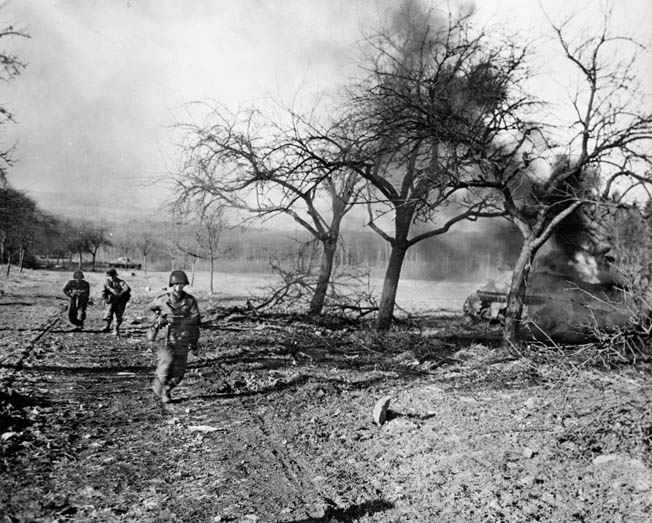
Second, the Rangers were to advance from the front of the 94th Division but were to move northeast, which would place them in front of the 10th Armored Division; it was the armored division that was assigned to relieve them.
Although complicated, a look at the terrain made it seem more sensible. The area was heavily wooded, compartmentalized by steep hills and cliffs. Strong German defenses stood before the Saarburg-Zerf road, but these faced toward Luxembourg. If the Rangers instead infiltrated through the heavily forested Waldgut Hundscheid, they stood a better chance of remaining undetected.
While the commanders planned, the battalion assembled and prepared. The men drew extra machine-gun ammunition, antitank mines, and one K- and one D-ration per man. The assembled battalion moved off to the river at 8 pm. After crossing by footbridge at Taben under enemy artillery fire, the battalion assembled on Hockerberg Hill, already in the forested zone. Several more casualties resulted there from German artillery fire.
Leading the twin column, with 50 yards between companies, was Captain Jack A. Snyder’s Company C on the left and Captain George R. Miller’s Company D on the right. Each column was led by Rangers armed with Thompson submachine guns.
As 1st Lt. James F. Greene, Jr.’s Company E and Captain Bernard M. Pepper’s Company B attempted to follow, they were hit again by German artillery and small-arms fire, which knocked out one of the three artillery forward observer parties from the 284th Field Artillery Battalion under Captain Stephen McPortland.
This same barrage caused additional casualties in Company B. The battalion became separated while Companies B and E attempted to aid their casualties and reorganize.
Colonel Sullivan, in the lead with Companies C and D, soon became aware of the break in the battalion and had Captain Luther radio back to find out what had happened. A half hour was lost while the battalion regrouped.
Once reassembled, the battalion moved forward again. Under continued harassing fire by enemy tanks and self-propelled guns, they moved in complete darkness. Sullivan decided that the enemy was firing at the sounds made as his battalion moved through the forest.
Later, when the Germans continued firing at them in open areas, Colonel Sullivan concluded that the Germans were using the clanking sounds of the antitank mines each of his men were carrying to zero in on them. These, however, were vital to establish the roadblock and to stop any enemy armor they might encounter.
With nothing available to muffle the sound, they marched on. Soon thereafter the advance guard came face to face with a number of enemy troops that they quickly captured. Unable to send the enemy back to American lines, Sullivan was forced to use some of his declining strength to guard these prisoners. As daylight approached, the 5th Rangers found a place to rest and reconnoiter the next part of their route.
Upon the return of his reconnaissance patrols, Sullivan organized his battalion in a square formation with 1st Lt. John M. Carter’s Headquarters Company and the prisoners in the center. Moving off in the direction of Zerf, Sullivan contacted his supporting 94th Infantry Division artillery and used spotting rounds to maintain direction.
As they moved, they came upon three enemy pillboxes from which they extracted 30 more prisoners. Moving forward again, Company B came under attack from the rear by more than 50 German soldiers. The Germans apparently thought they had encountered an American patrol rather than a battalion of Rangers. Charging across open ground, they ran directly into the fire of Captain Miller’s Company D, which killed 20. The survivors were added to the Rangers’ prisoners, which now numbered over 100.
At some point in these engagements the enemy artillery fire, rough terrain, and darkness caused Lieutenant Gambosi’s platoon and half of another of Company B to disappear. With another 16 battle casualties resulting from these fights, the remnants of Company B were assigned to guard the growing number of prisoners.
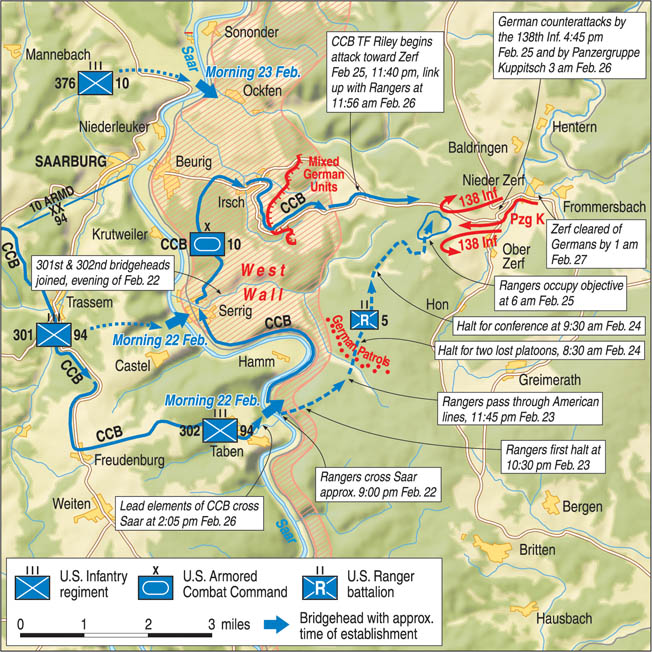
Captain Potter also briefly lost contact between his headquarters and 1st Platoon and Company E but managed to regain it. However, nothing further was immediately heard from Lieutenant Gambosi and his missing men.
More and more encounters with the enemy occurred as the battalion penetrated deeper behind German lines. A patrol from Company E came across a German position and captured 20 of the enemy. While crossing a stream, Captain Parker’s Company A was attacked by the enemy, whom they chased away, leaving several casualties on the field.
Soon afterward a German Red Cross vehicle came along and stopped to view the wounded. A German doctor and four medical aid men were captured from the ambulance by Company A. The doctor was brought to Colonel Sullivan to whom he complained, “This is 4,000 yards behind the lines. No, no—you can’t be here.”
Throughout the day the Rangers continued their advance. Each time they encountered enemy forces they changed direction to prevent them from getting a chance to predict the route and prepare an ambush for the Rangers.
Company B’s meager force continued to guard a growing number of German prisoners. The German doctor, now recovered from his surprise, was treating both American and German wounded.
On the night of February 22-23, the battalion alternately moved and rested. After each halt, patrols were dispatched to check on the surrounding area for enemy positions and to survey the route ahead. Several pillboxes, fortified houses, and field fortifications were taken by these patrols, and the number of prisoners continued to grow.
As dawn broke on February 23, an enemy self-propelled gun opened fire on the battalion but sped off when the Rangers returned fire. Soon afterward, the battalion arrived at its objective, following the sound of artillery rounds fired at the Rangers’ request by the artillery of the 94th Infantry Division.
Colonel Sullivan immediately dispatched 1st Lt. John T. Reville’s Company F to search the surrounding area. These Rangers cleared the area and captured several fortified houses. Second Lt. Oscar A. Suchier, Jr., and his platoon from Company F attacked one of these fortified houses; at a cost of one Ranger killed and another wounded they brought in 30 more prisoners. A patrol led by Captain William D. Byrne, the battalion intelligence officer, captured 15 more.
Although intelligence had reported a German artillery battery in the area, the Rangers could not find it. Colonel Sullivan then set up his roadblock, the purpose of the mission. He located it where the Irsch-Zerf road entered the woods, giving his Rangers some concealment. While the battalion moved to the site, Captain Pepper’s Company B, bringing up the rear, came under enemy fire. Despite this brief delay, the battalion set up the roadblock and prepared to defend itself until relieved.
Lieutenant Greene’s Company E placed the antitank mines on the road and then established themselves in a position from which they could cover the mines with small-arms fire and a bazooka. With Company E’s position as its focal point, the rest of the battalion set up an all-around defense. As they did so, a German self-propelled gun came down the road. Spotting the Americans, the German crew “jumped out and ran like hell” according to one Ranger.
After failing to destroy the abandoned gun with the bazooka, the Rangers set it on fire with gasoline. This action alerted the Germans that a strong American force was in their rear. As Company A was withdrawing from a forward position, they were attacked by an enemy force that had, unseen, settled in their rear. Several casualties were incurred during the two-hour battle before Captain Parker’s men could rejoin the battalion. As the day progressed, more and more German attacks came against the roadblock, but the Rangers continued to hold their positions.
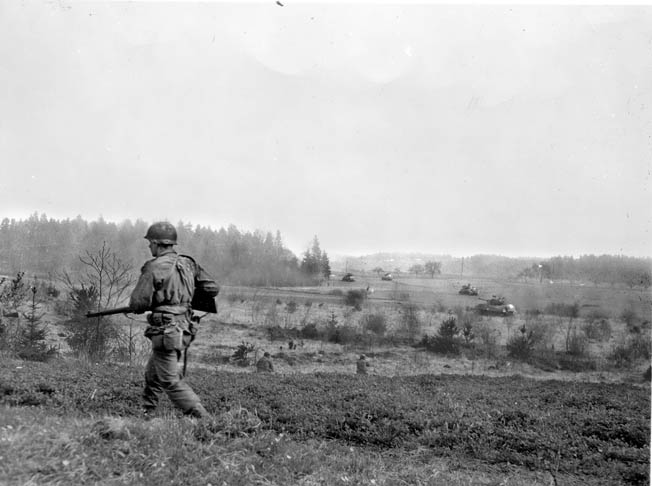
Back along the Saar River, things were not going as well for the other American units. As late as February 24, with the Rangers already on the road, the 10th Armored Division had not been able to get its tanks across the river. Under constant German counterattacks, even the 376th Infantry Regiment was unsure if it could retain its bridgehead; short some 47 officers and 506 enlisted men, the regiment did not have the strength to cover its assigned zone.
Senior officer casualties began to mount as the Americans tried everything to clear a secure a bridgehead for tanks, tank destroyers, and artillery. Finally, on February 25, three American tanks crossed successfully into the 376th Infantry’s bridgehead but were soon knocked out by enemy fire as they tried to expand the American holdings.
Frustrated, General Morris organized a task force under Brig. Gen. Edwin William Piburn, his assistant division commander. A native of Kansas, Piburn had been commissioned into the infantry after graduating from Iowa State University in 1917. Given the three armored infantry battalions of the 10th Armored Division, Piburn was ordered into the bridgehead to reinforce the weakened 376th Infantry.
Even this didn’t immediately help, for Company B of the 61st Armored Infantry Battalion was surrounded in the village of Schouden and nearly overrun. It wasn’t until Lt. Col. Russell C. Minor’s 1st Battalion, 376th Infantry, counterattacked that the armored infantrymen were able to withdraw.
By the end of February 27, Generals Malony and Morris agreed that they could wait no longer—tanks had to go over the bridges at Taben, the bridgehead of the 94th Infantry Division. General Walker quickly agreed to the idea, and the 10th Armored Division tanks crossed through the 94th Infantry Division, taking casualties as they went.
Attacking the enemy in front of the 376th Infantry from flank and rear, they joined with their armored infantry battalions and formed their task forces for the push to Irsch. A linkup between the two American divisions quickly followed.
Almost immediately with the linkup of the 10th Armored and 94th Infantry Divisions the Germans withdrew. With the American bridgeheads now consolidated, there was no longer any hope that they could keep the Americans from crossing the Saar River in this sector.
At the same time, Sullivan’s 5th Ranger Battalion had cut the enemy’s supply and communications line to the rear, threatening them from that direction as well. The Germans had no choice but to withdraw.
Wearily, the American infantry and tankers loaded up their equipment and moved forward once again. The Rangers were still out there somewhere, and they needed relief.
Despite the success of XX Corps in crossing the Saar River, General Patton was displeased. Determined to thrust his Third Army into the heart of Germany, “Old Blood and Guts” looked about for some other means of accomplishing this goal. What he needed was to retain the 10th Armored Division, which he had only on temporary loan.
Meeting with his superior, General Omar N. Bradley, Patton convinced him to let him “unofficially” keep the division until demands for its deployment elsewhere made it necessary to take it from the Third Army. Patton’s objective was now officially Trier.
Meanwhile, across the Saar River the Rangers were still set up in a narrow strip of woods that extended northward from the Waldgut Hundscheid and intersected with the Irsch-Zerf road. The point where the road passed through the woods was clearly marked as a “cleft in the wood line” and was the Rangers final objective.
As the Rangers waited for relief, Walker’s XX Corps established Task Force Riley, under Lt. Col. John R. Riley, made up of elements of the 10th Armored Division’s Combat Command B. Fighting their way through heavy small-arms, Panzerfäuste, and antitank fire, they pushed into Irsch and secured the town.
At the same time, the Rangers began experiencing more problems. Their position was not an ideal defensive one. There was a crest about 30 yards from their perimeter that blocked their view of any enemy approaching from the west. A German counterattack could easily approach to within hand-grenade range of the Ranger positions on their west-facing side.
To the east, however, the road slanted downhill toward Zerf, and the Rangers had a clearer and longer view of any potential enemy approach. Companies D and E occupied the east side of the Ranger perimeter facing Zerf.
Captain Snyder’s Company C took the west side, while Parker’s Company A had the south to guard against any Germans who might come out of the Waldgut Hundscheid, as the Rangers themselves did. Pepper’s Company B, still missing two of its platoons, was guarding prisoners in a barn near the center of the perimeter.
The Germans still seemed unaware that the Rangers were in their midst. An enemy tank destroyer came along and was easily captured by Greene’s Company E, which destroyed it with rocket fire. Later, an enemy half-track came up the road and hit one of Company E’s antitank mines. The German crew joined the group of prisoners being guarded by Company B. German soldiers, mostly walking wounded escaping from the battles along the Saar River, stumbled into the roadblock and were added to the guests of Company B.
But all good things come to an end. For the Rangers, this happened late on February 26 when the German command realized they had a significant force on their lines of communication and decided to destroy it.
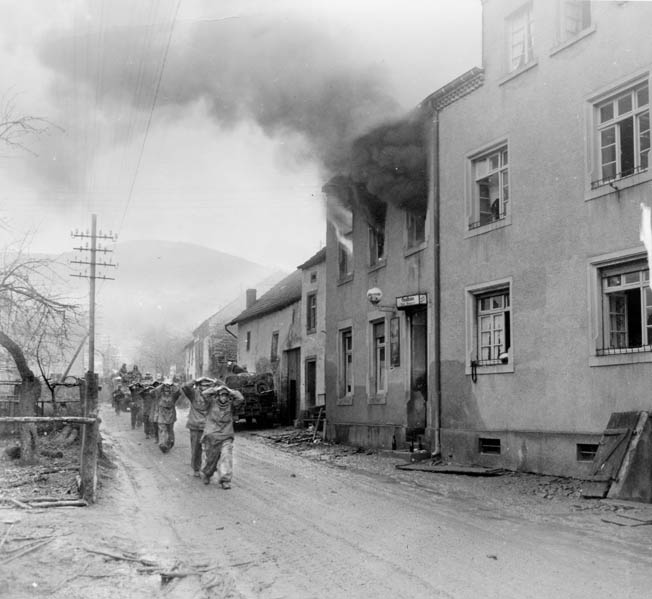
At about 3:45 pm, just as Task Force Riley entered Zerf from the north, the Rangers were rocked by a concentrated artillery barrage and a two-pronged attack by some 200 infantry, who took advantage of the concealed approach routes to the roadblock. Company A was the recipient of both artillery and ground attack.
Coming through the woods from the Waldgut Hundscheid in the south, the 200 Germans hit at the same time as another force, estimated as 400 more, hit Company E from the northeast. Using the trees and ground for cover, the Germans made a close approach to the Rangers’ positions before launching their assault. Both assaults were repulsed, but the pressure caused Colonel Sullivan to dispatch the remnants of Company B to reinforce Company E, which also received a platoon from Company F. Rangers from headquarters company took over guarding the prisoners.
Eight enemy prisoners were taken during this attack. After interrogation, it was learned that the attacking force was the 136th Regiment, 2nd Mountain Division—a unit that had fought in Poland, Norway, and Finland before arriving on the Western Front. After being badly hurt in the Colmar Pocket in January, the surviving 4,000 men had been ordered to attack the Rangers “to the last man.” Fortunately for the Rangers, most of the mountain troopers were Austrian and, at this stage of the war, preferred capture to death. By the end of the day, another 135 prisoners had been added to the Rangers’ haul.
These latest attacks brought another serious problem into focus. In fighting off the several attacks on the way to the roadblock, and now repelling two major enemy assaults, the Rangers’ ammunition stocks were running dangerously low. A call for a parachute drop of ammunition was approved, and two light observation aircraft from the 94th Infantry Division artillery attempted several drops. German fire kept the aircraft too high, causing most of the drop to fall into German hands.
If this operation to hold the roadblock without relief continued much longer, the Rangers could be forced to retire or even surrender, as they would be unarmed. Sullivan ordered patrols to reconnoiter possible escape routes.
While American task forces attacked independently into the German defenses, the Rangers held on and blocked the main avenue of enemy retreat or reinforcement. Confusion reigned in and around Zerf. Germans were firing from the east and the west. Americans were firing toward the east and the west. The Rangers sat in the middle of the battle, being fired at from all sides and returning fire when they could.
They sat in the middle of an artillery bulls-eye of which the Germans took full advantage. That night another German attack by some 400 enemy soldiers hit Company E. These men were part of Kampfgruppe (Battle Group) Kuppitsch. Three 90-man companies formed the battle group.
Recently formed in Heidelberg under the command of a Major Kuppitsch, the Kampfgruppe had no formal organization and was composed of miscellaneous companies hastily formed from convalescent companies and new recruits. Armed only with rifles and machine guns, the soldiers made up for any shortcomings with their spirit and intense mortar and artillery support. Company E was soon in serious trouble.
The German attack pushed into the American perimeter. Captain Parker and 12 men from his Company A rushed to assist Company E. Machine-gun ammunition was exhausted. So intense was the fighting that the Rangers had to call down friendly artillery on their own forward positions from which they had just been ejected.
Soon the battle subsided, and the Rangers took stock of their situation. In addition to several casualties, 14 Rangers were missing in action, believed captured, while 25 German soldiers had been taken prisoner.
For the remainder of the night, intense German artillery fire hit the 5th Ranger Battalion. In the morning, Colonel Sullivan sent the remaining men of Company F—26 in all—to regain the lost ground. They found the woods littered with enemy dead.
The foggy dawn of February 26 brought the Rangers a sudden quiet. There was no artillery fire, no mortars fell into their foxholes, no small-arms fire kept them pinned down. As they relished the calm, the Rangers observed about 200 German soldiers walking along, seemingly lost and unable to see far due to the fog, terrain, and woods. Noisily approaching the Rangers’ positions, they were easy prey.
Setting up a hasty ambush, the Rangers allowed the Germans to walk up to the American perimeter before opening fire. Many enemy troops were killed, cut down by small-arms fire. With no escape route, 145 surrendered.
This unexpected victory capped the Rangers’ experience at Zerf. Shortly before noon on February 26, the 10th Armored Division’s Temporary Team A came down the road and was greeted by a Ranger outpost. Later that same morning, the two lost platoons from Company B reached the roadblock perimeter. Last seen two days earlier, the platoons had become separated from the battalion during the approach march to the roadblock.
Lieutenant Gambosi had made several attempts to rejoin the battalion, following the 10-degree azimuth that Colonel Sullivan had directed as the battalion route, but each time he was turned aside by German artillery, machine-gun, or mortar fire. Eventually radio contact was established with Sullivan, but the battalion could not afford to wait while Gambosi’s Rangers caught up. Instead they were ordered back to Taben.
There they found Task Force Riley, the 21st Tank Battalion less Company B, Company A of the 54th Armored Infantry, and a platoon of armored engineers. Lt. Col. Riley was under orders to proceed to Irsch, where he was to join with the 61st Armored Infantry Battalion, but he was hampered by a lack of infantry to clear his way. Lieutenant Gambosi and his 24 Rangers jumped into six armored half-tracks and led the advance to Irsch.
There the tankers were ambushed by the enemy and five tanks were knocked out. The Rangers were ordered to clear the town. In fierce house-to-house fighting, that is just what they did. Three roadblocks were cleared, and a German heavy tank was forced to withdraw when the Rangers drove off its infantry support.
The Rangers took 60 prisoners and spotted a second German heavy tank. That night the task force was joined by other elements of Combat Command B and formed into a spearhead—Temporary Task Force A—to relieve the other Rangers at Zerf.
The Ranger’s final few casualties resulted from occasional enemy artillery fire hitting within their perimeter that morning. At 3 pm they received word that General Malony had attached them to his 301st Infantry Regiment, which was attacking in their direction.
For the remainder of February 26 and all day on the 27th, the 5th Ranger Battalion continued to repel German infantry attacks on their positions and ambush retreating Germans withdrawing before the advances of the 94th Infantry Division and 10th Armored Division.
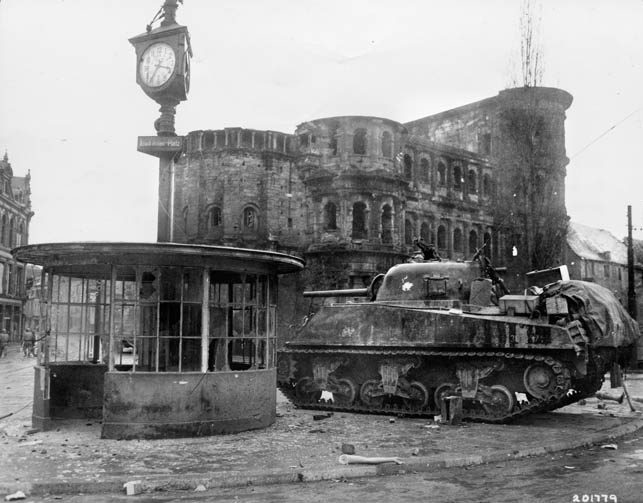
The next few days, reinforced with four tanks, four tank destroyers, and two quad-.50-caliber machine gun-mounted half- tracks, the battalion joined with the 301st Infantry Regiment in capturing additional ground.
During this period came a tragic friendly fire incident when a company of Rangers fired on an American infantry platoon that had failed to give a password when approaching the Rangers’ position.
By the end of a series of ground attacks, Lieutenant Gambosi, his radioman, and one other Ranger were all that were left of the 2nd Platoon, Company B, 5th Ranger Battalion.
Having held their critical roadblock, which directly aided the XX Corps’ crossing of the Saar River, Third Army’s capture of Trier, and the advance to the Rhine, the Rangers were back in the role for which they were ill suited, that of conventional frontline infantry soldiers.
Behind them they left 90 Ranger casualties and 399 enemy dead and brought in 328 enemy prisoners captured in the nine-day operation—originally intended to last two days. They had penetrated three miles behind enemy lines, blocked a critical road essential to the defeat of the enemy, and held that surrounded position until relieved.
Finally, on March 4, 1945, the battalion was relieved by one equally understrength rifle company of the 376th Infantry Regiment and sent to Schwebsingen, Luxembourg, for rest and relaxation and to rebuild its severely depleted numbers.
For the remainder of the war, the 5th Ranger Battalion was assigned conventional missions, including additional combat missions, guarding prisoners, and being a part of the military government in and near Bamberg, Erfurt, Jena, Gotha, and Weimar, Austria. It ended the war at Ried, Austria.
From its landing at “Bloody Omaha” on D-Day until the final German surrender in May 1945, the battalion reported killing an estimated 1,572 enemy soldiers and had taken 4,541 prisoners. The cost to the battalion was 115 killed, 552 wounded, and 25 missing in action. Two Rangers were known to have been captured by the enemy. This casualty rate was in excess of 100 percent of the battalion’s authorized strength.
Colonel Darby once said, “Commanding the Rangers was like driving a team of very high-spirited horses. No effort was needed to get them to go forward. The problem was to hold them in check.” Had Darby been with the 5th Ranger Battalion during its ordeal at Zerf, he undoubtedly would have been immensely proud of his “high-spirited horses.”
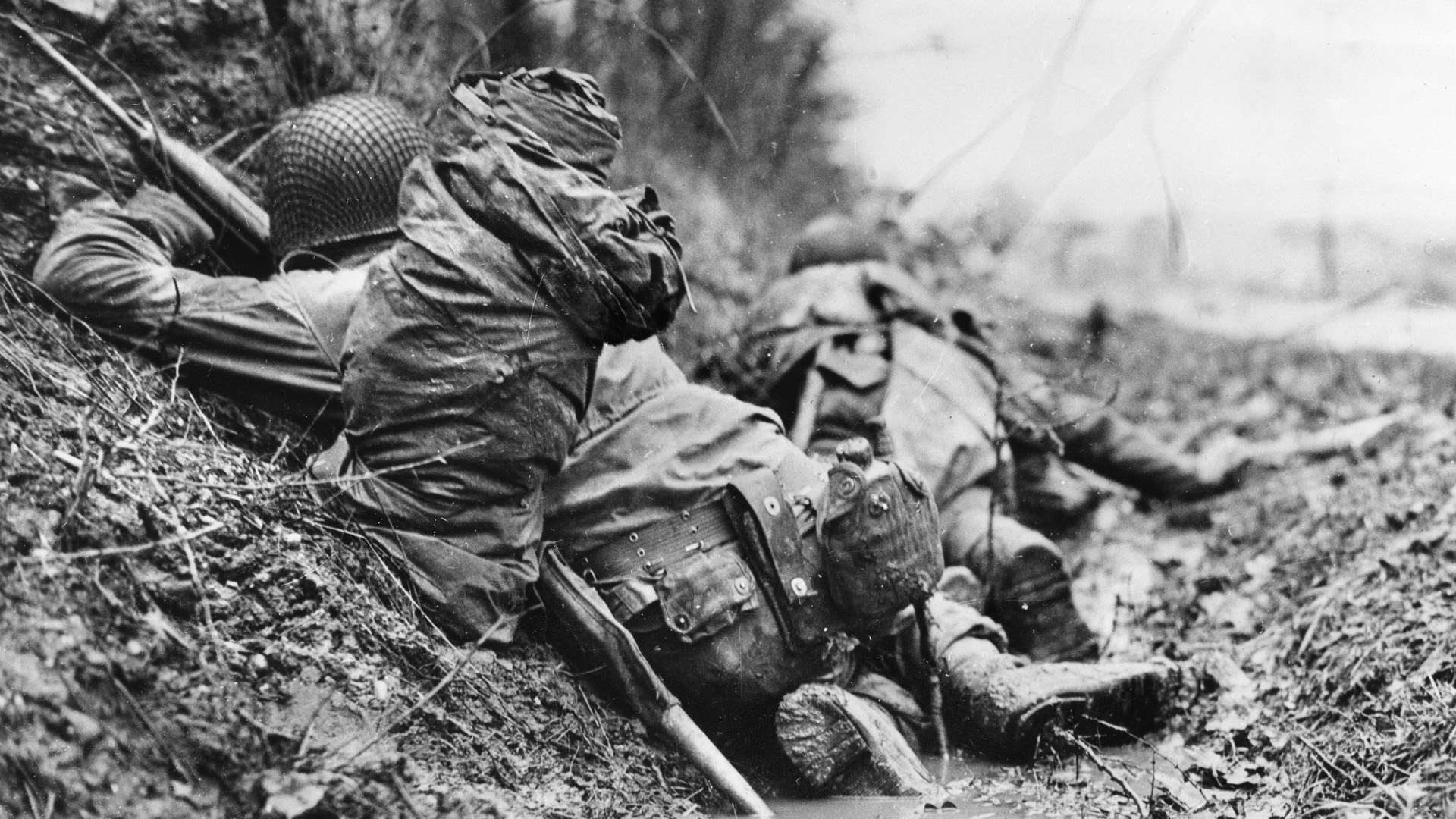
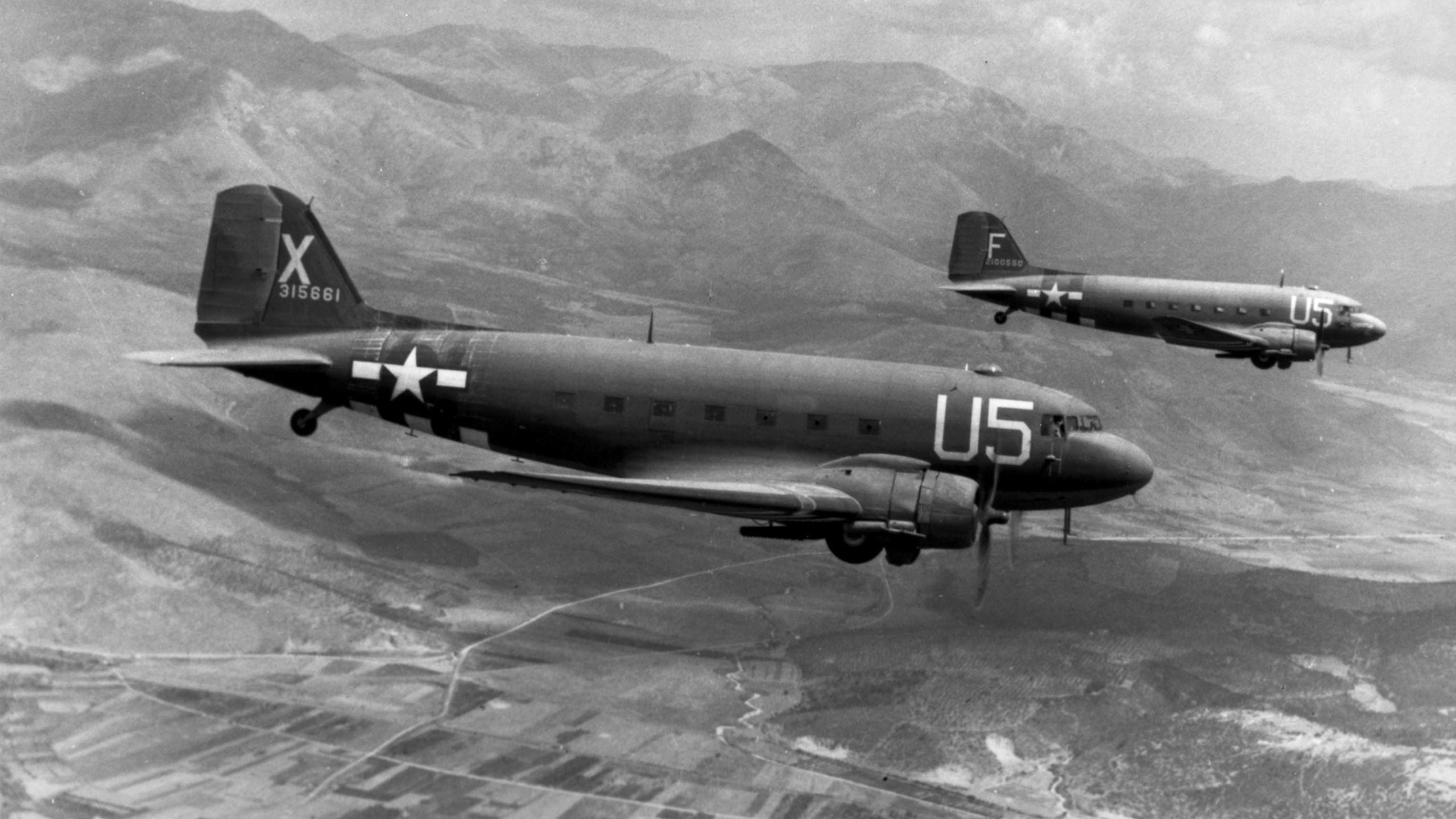
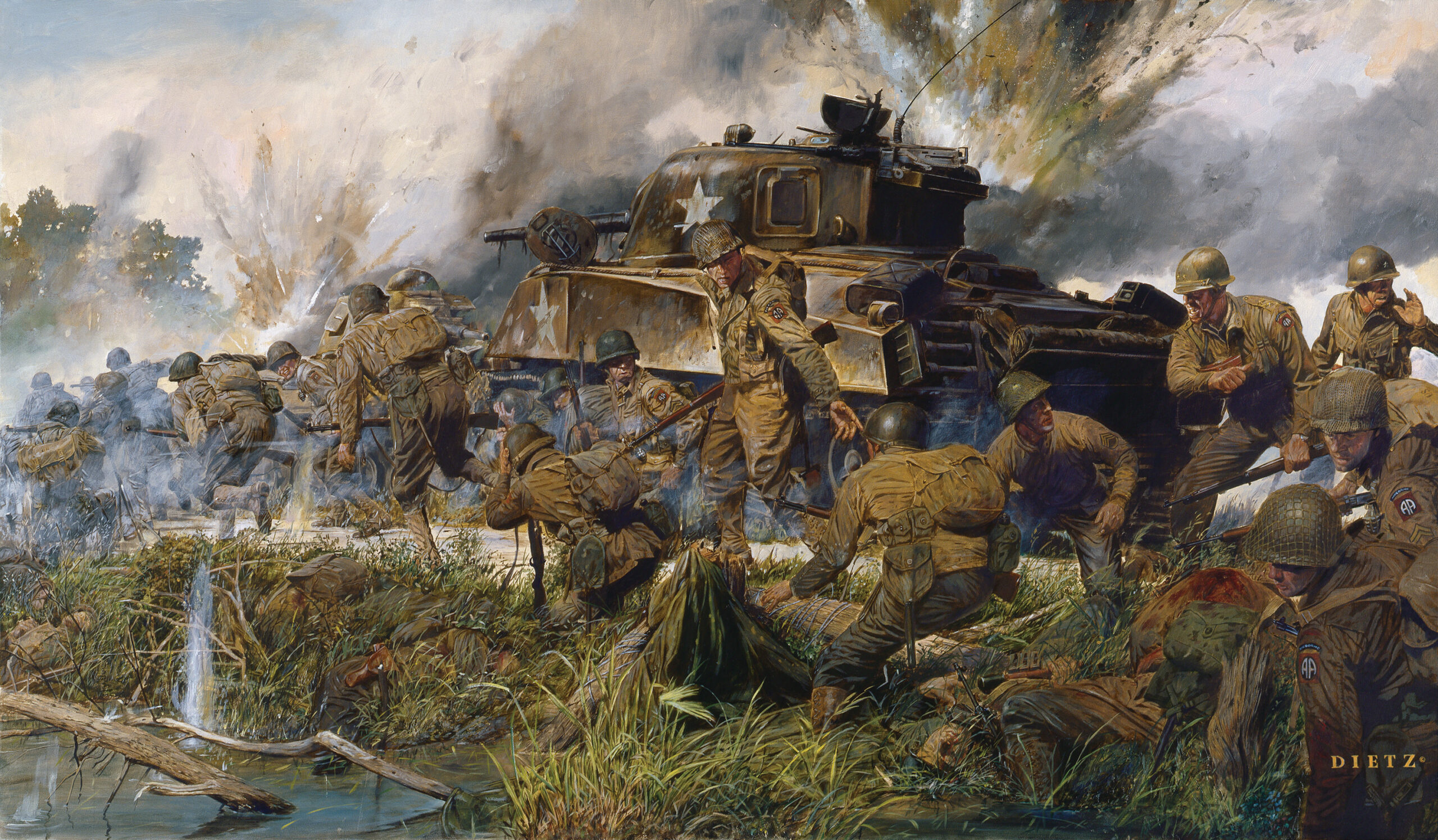
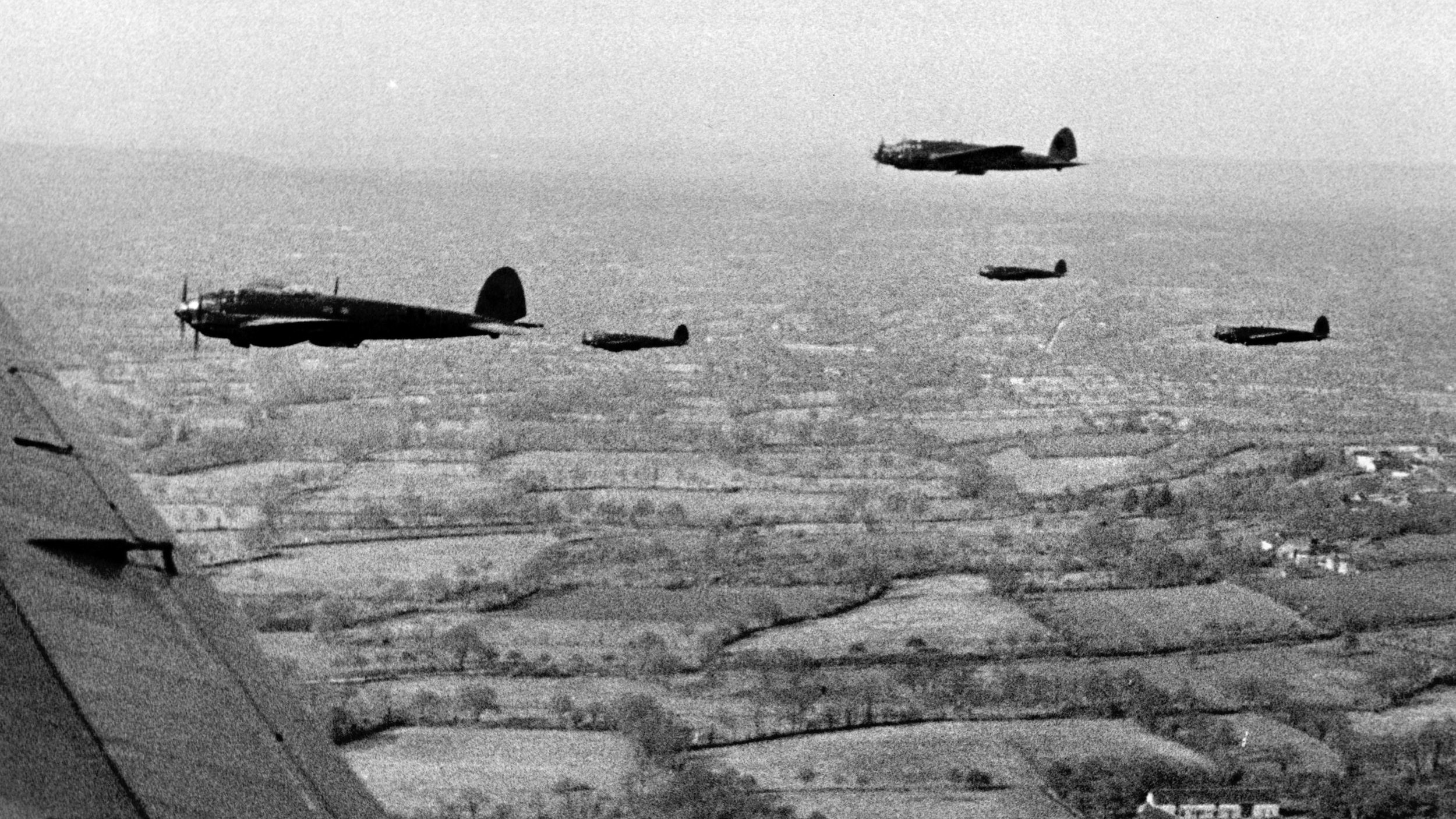
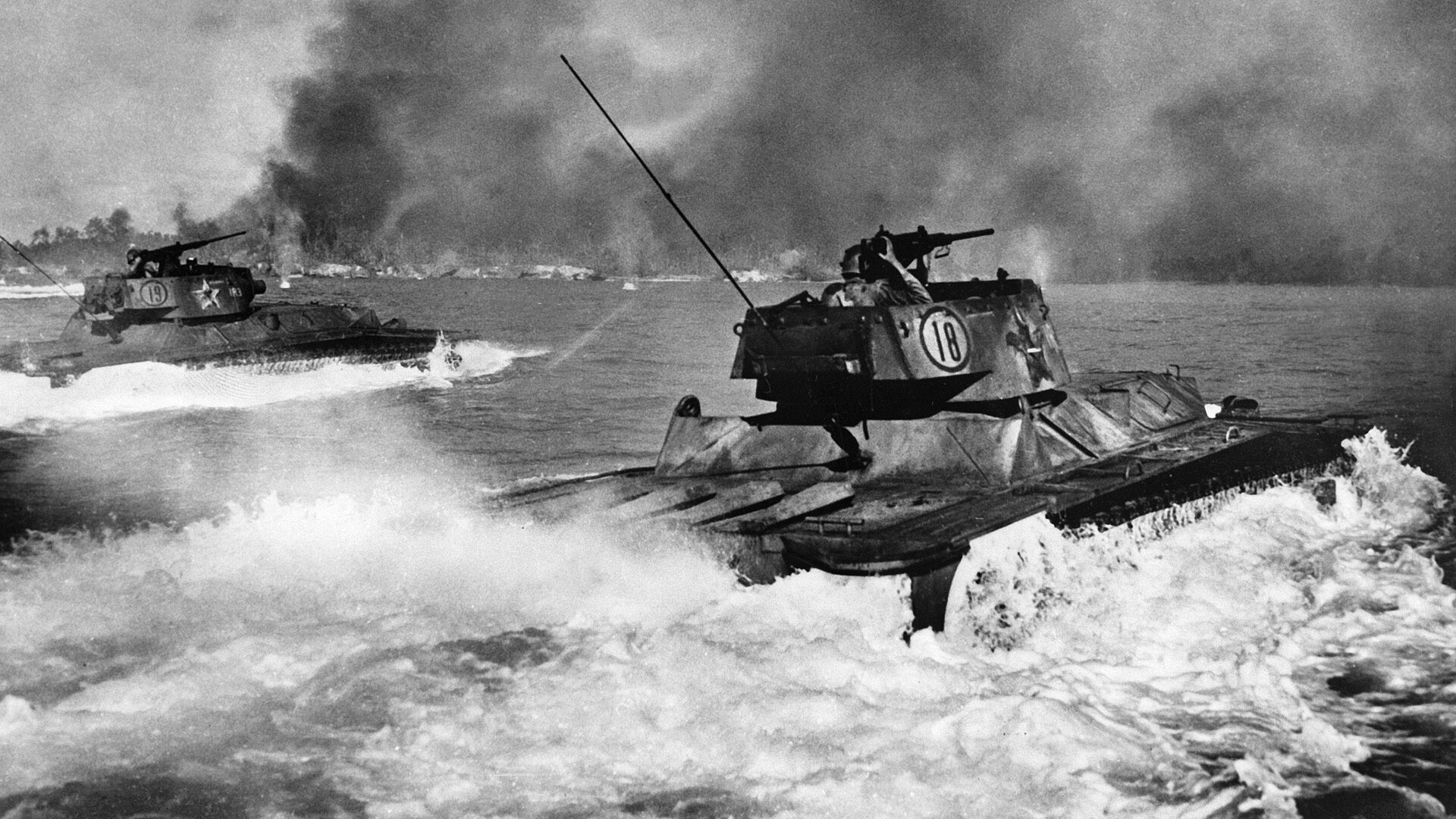
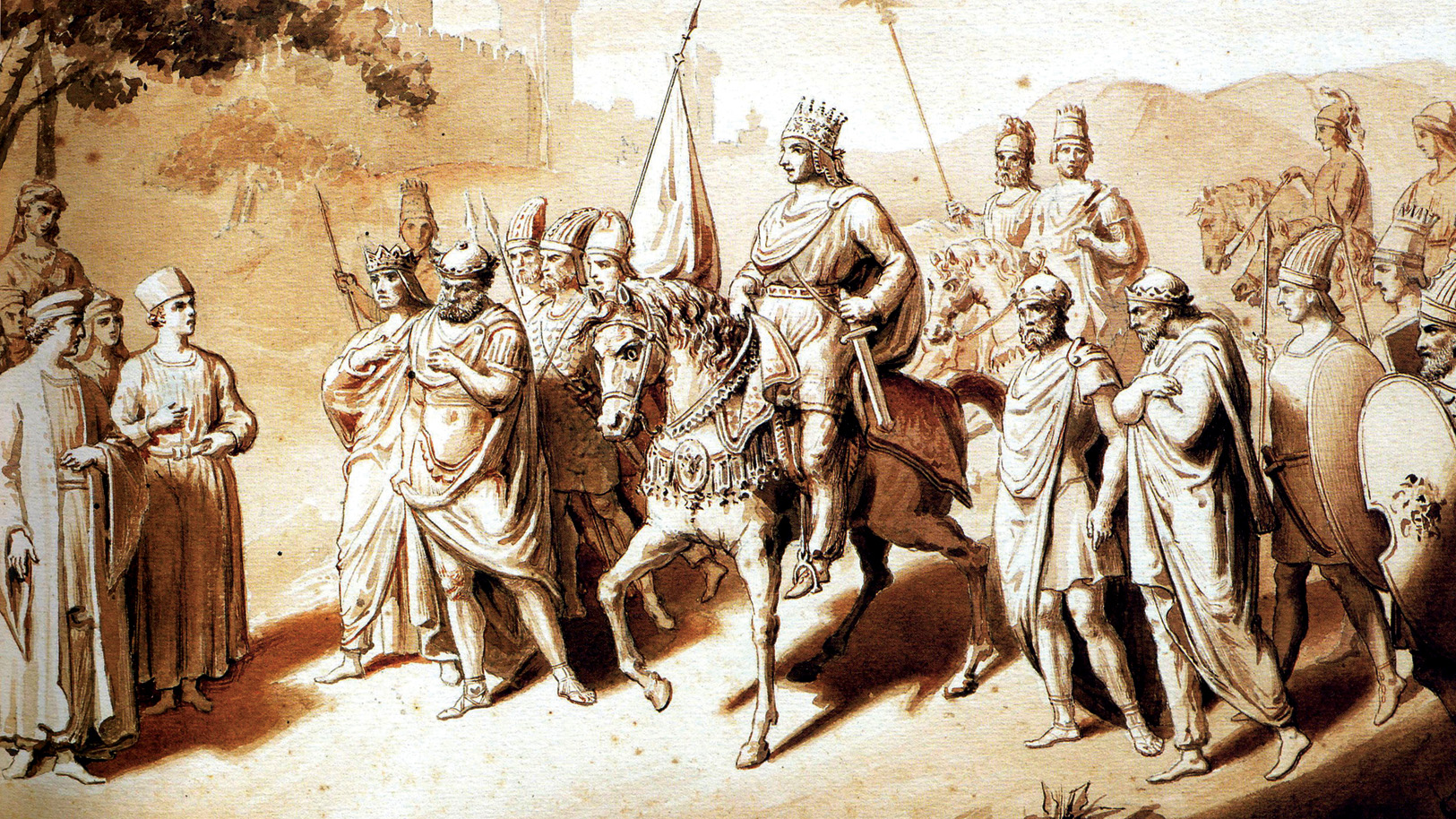
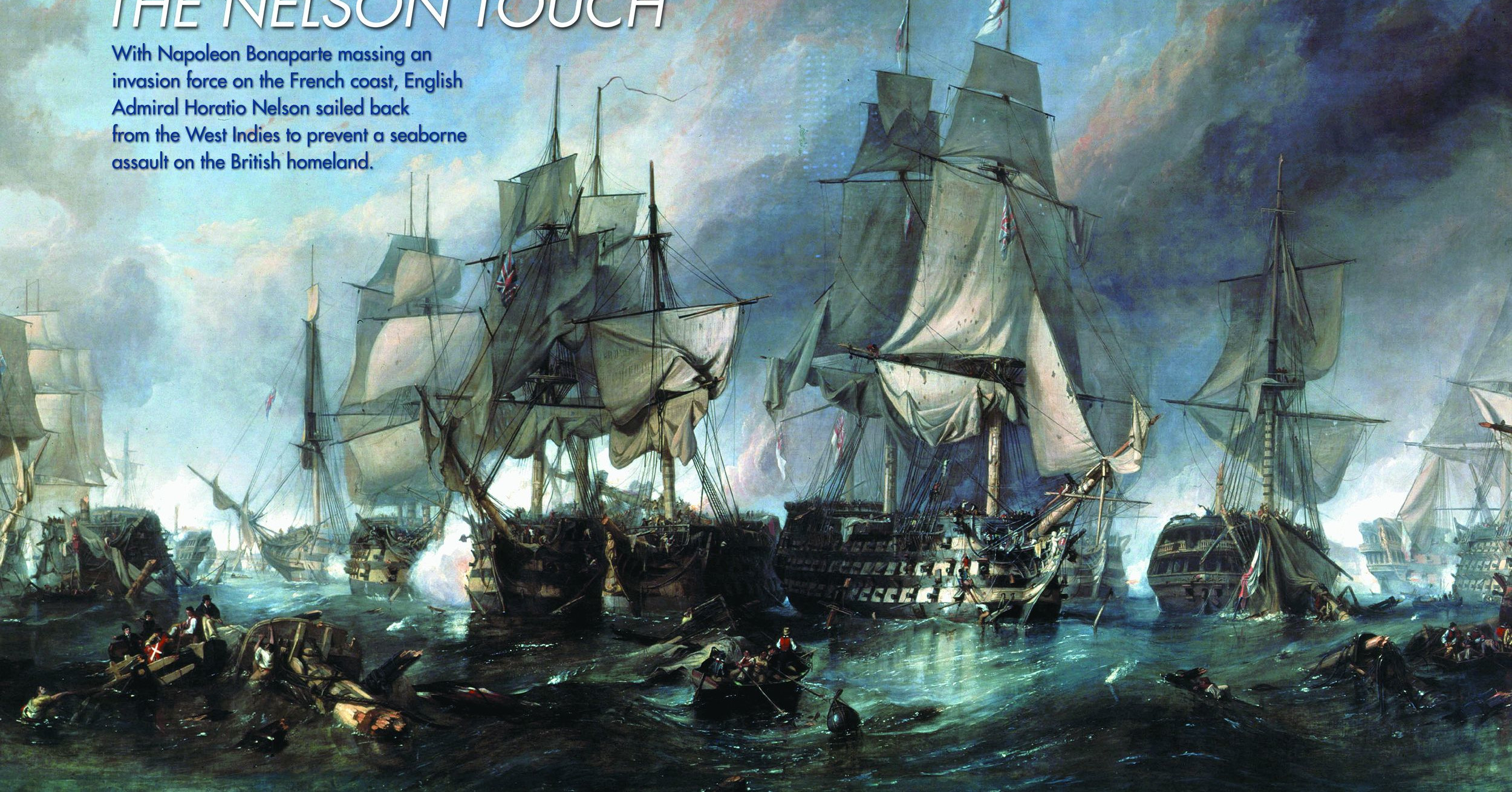
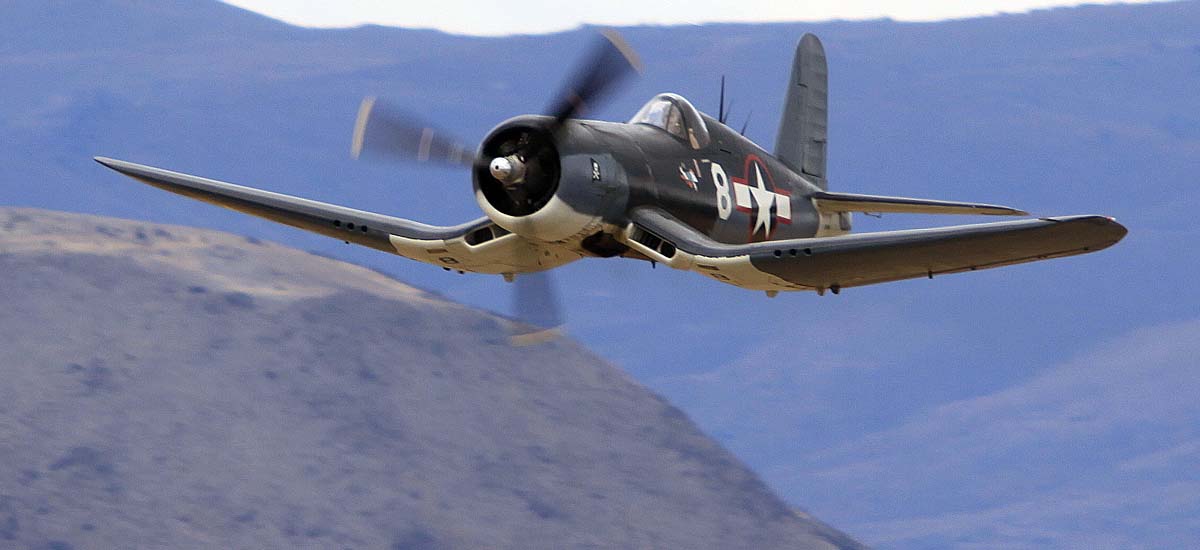
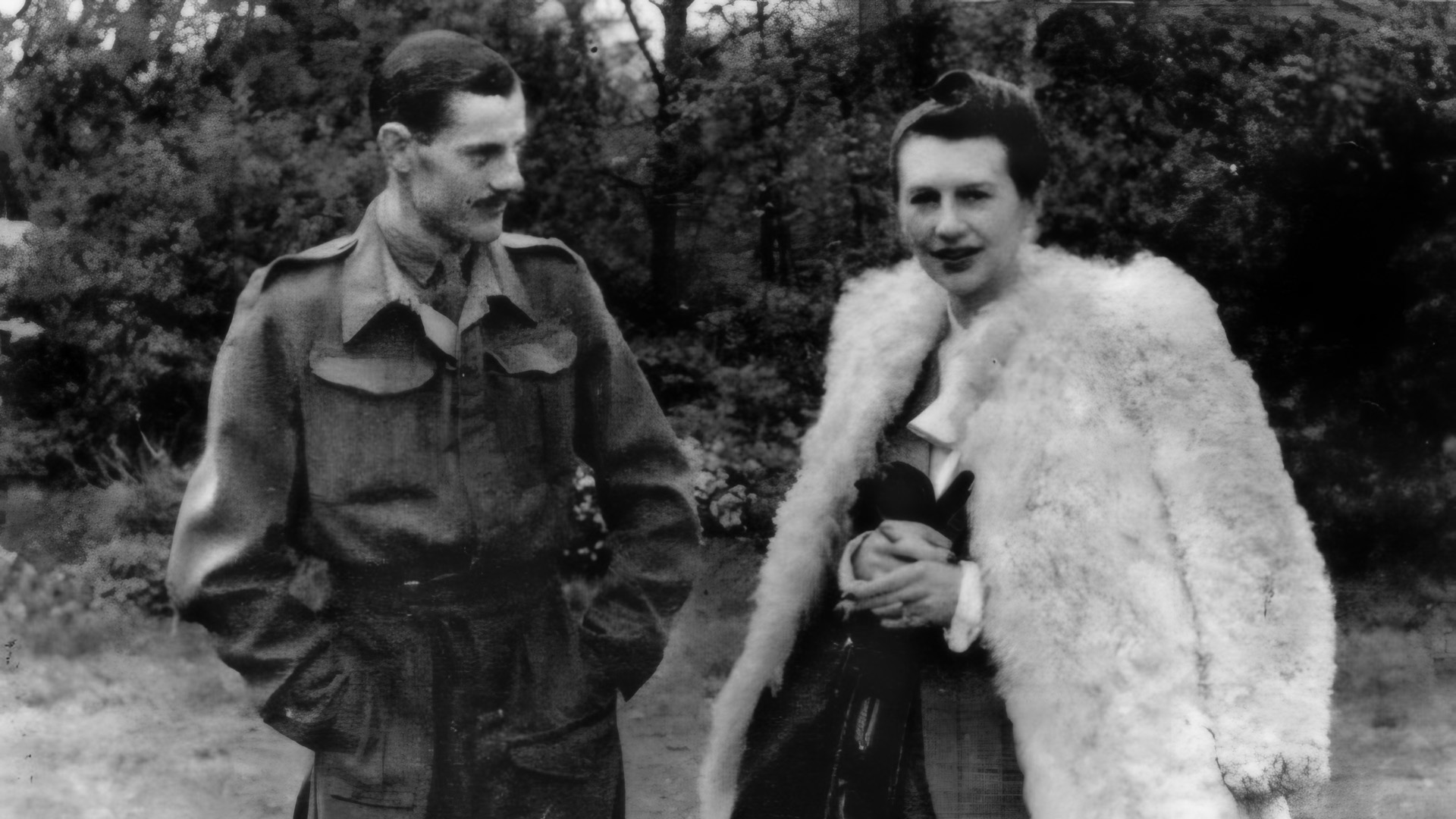
I was privileged to know three of the Rangers who took part in the action at Irsch-Zerf – Jack Burke, Jim Gabaree and Dan Farley – when they came to the Maisy Battery in Normandy in 2007. All agreed that compared to landing on Omaha Beach the Irsch-Zerf operation had been a far more testing time, requiring reserves of stamina and endurance which they had not known until then that they possessed. Here are some of their comments:
Jack Burke – Col. Sullivan told me I was in charge of the Medics until a replacement Doctor joined us. He told me to go into the big bunker which we used for prisoners and do the best we could to handle the wounded along with the Company Medics until the replacement doctor arrived. God was with us because this doctor (Captain Joe Hilsman) arrived before were cut off. A dispensary was set up in house and this doctor did a fantastic job under very difficult conditions. Due to heavy prisoner load that we had captured they were kept in a big bunker and we took care of their wounded as best we could. He deserves a great deal of credit for taking care of all the wounded under the most difficult conditions…small arms fire, artillery, mortars, rockets that continually hit the area!
Jim Gabaree – At one point we were told to hold two pillboxes. The Germans were determined to annihilate us by attacking with 200 hundred men, using machine guns and rockets. There was no way to go but to stand and fight, it was practically hand-to-hand combat. After about an hour the Germans withdrew. That night they attacked again, but withdrew after about 60 of their men were killed or wounded. Common sense told us that we could not stand these repeated attacks, as we were so outnumbered and in such an exposed position.
We relocated to the battalion’s defensive circle. ‘E’ Company was being attacked by a force of at least 400 men. They were out of ammunition and casualties were heavy, there were only five Rangers left. Twelve
men from ‘A’ Company were sent to try to hold the line. Victory was in sight for the Germans, we were only 17 men trying to stop an overwhelming force. It was then that we decided there was nothing to lose:
we radioed the artillery to commence firing on our own positions. The artillery officers questioned our decision. ‘Fire for effect’, they were told. We dug in and started to pray. The Germans were exposed to this
overwhelming artillery barrage as they were standing above ground while attacking us. It was an awesome experience for us to be subject to our own intense artillery shelling. All hell broke loose, and the Germans panicked. They ran right through our defences. We turned around and started firing at
them from their rear. When day broke, there were dead Germans everywhere, it was a horrible sight to see. This was not the elation of victory. What a waste of life.
Dan Farley – There were about 30 bunkers scattered around that road, and on the 5th day – there was a bunker up on a hill in the woods causing us so much trouble, so Col. Sullivan sent A Co. up there to break it up. We fought our way up there, got there and kicked in the door – I remember kicking in the door – there were about 30 enlisted men and 10 officers we took prisoner then.
One time they handed me a bunch of prisoners – ‘junior, (they called me Junior) take these prisoners.’ and some officer tuned over a bunch to me. I was pushing them along, and I stumbled and fell and dropped my rifle. One of the prisoners picked it up and handed it right back to me. I’ll never forget that.
Screaming mimi’s would scare the Hell out of you. I hated those.